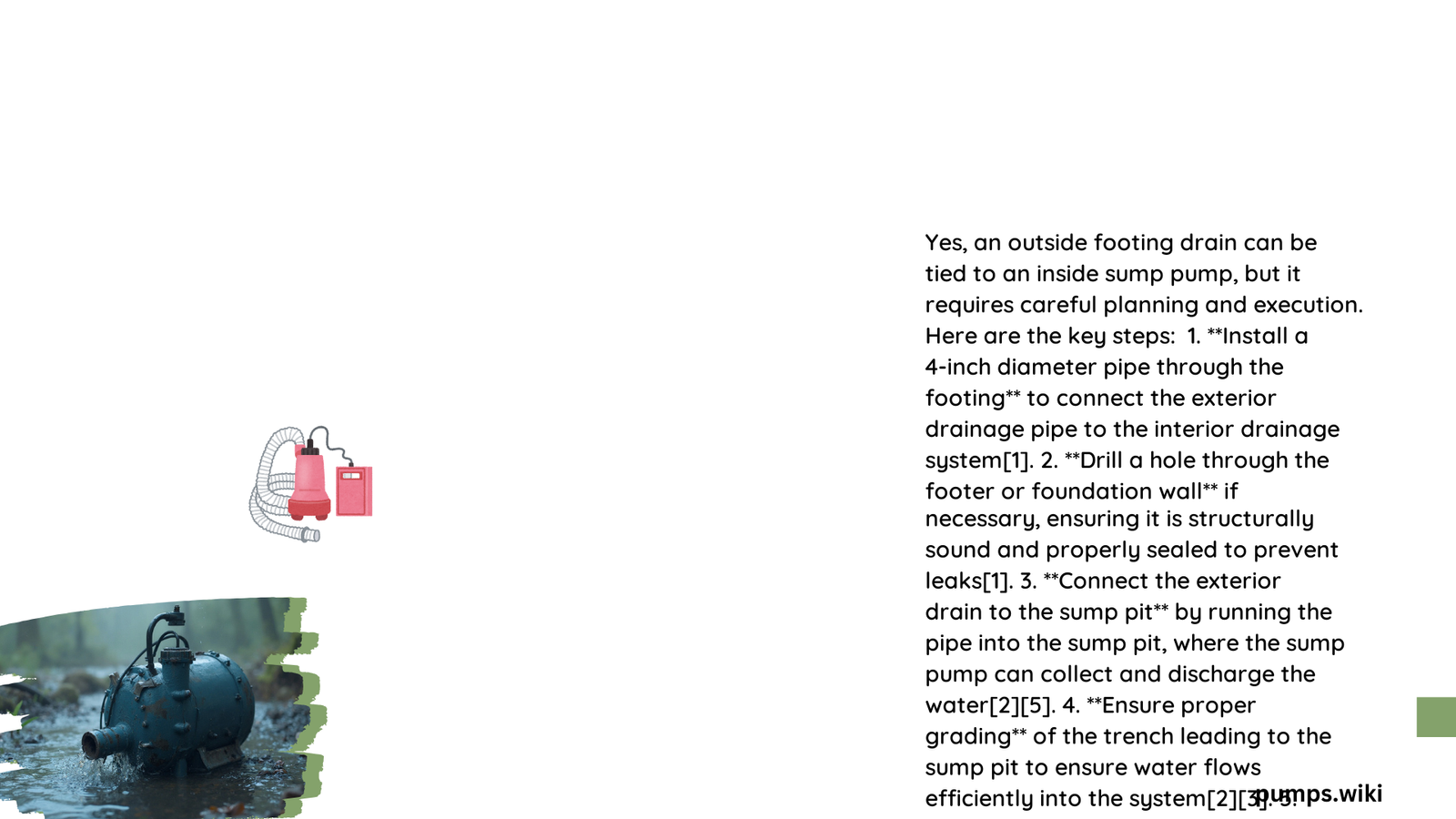Homeowners facing persistent water management challenges often wonder about integrating exterior foundation drainage systems with interior sump pump solutions. Connecting an outside footing drain to an inside sump pump requires careful engineering, precise technical considerations, and a strategic approach to water management that prevents moisture infiltration and protects structural integrity.
What Are the Technical Requirements for Connecting Outside Footing Drain?
Connecting an outside footing drain to an inside sump pump involves several critical technical specifications that ensure effective water management:
What Pipe Specifications Are Necessary?
- Pipe Diameter: Use a 4-inch diameter pipe for optimal water flow
- Material: Perforated pipe wrapped in filter fabric
- Placement: Positioned with minimum 1/8 inch per foot slope
- Gravel Bed: Surrounded by washed stone for enhanced drainage
How Should Drainage Connection Be Implemented?
- Preferred Method: Connect through footing bottom, below rebar
- Alternative Approach: Install interior French drain for redundancy
- Avoid: Direct drilling through structural footing
What Challenges Might Arise During Drainage Integration?

| Challenge | Potential Solution |
|---|---|
| Flow Rate Limitations | Design system for peak water volume |
| Backflow Risk | Install check valve in discharge pipe |
| Soil Infiltration | Use high-quality filter fabric |
What Are the Critical Installation Considerations?
How Do You Prevent Water Recycling?
- Discharge water at least 10 feet from foundation
- Ensure discharge point is below grade
- Consider alternative discharge methods like:
- Drywell
- Storm sewer
- Engineered infiltration tank
What Cost Factors Should Be Evaluated?
Estimated Project Breakdown:
– Materials: $1,000 – $3,000
– Labor: $2,000 – $5,000
– Permits: $100 – $500
– Total Project Range: $3,100 – $8,500
What Professional Recommendations Exist?
Professional drainage experts recommend:
– Comprehensive site evaluation
– Professional assessment of soil conditions
– Detailed water table analysis
– Consideration of local building codes
– Professional installation by certified contractors
What Are Potential Risks of Improper Connection?
Incorrect drainage system integration can lead to:
– Structural foundation damage
– Persistent moisture issues
– Potential mold growth
– Decreased property value
– Compromised structural integrity
How to Ensure Successful Drainage System Integration?
- Conduct thorough site assessment
- Consult licensed drainage professional
- Obtain necessary permits
- Use high-quality materials
- Implement proper slope and drainage techniques
- Regular maintenance and inspection
What Long-Term Benefits Exist?
- Improved foundation protection
- Reduced moisture-related structural risks
- Enhanced property value
- Comprehensive water management solution
- Minimized potential for water damage
Pro Tip: Always prioritize professional consultation to ensure safe and effective drainage system integration.
